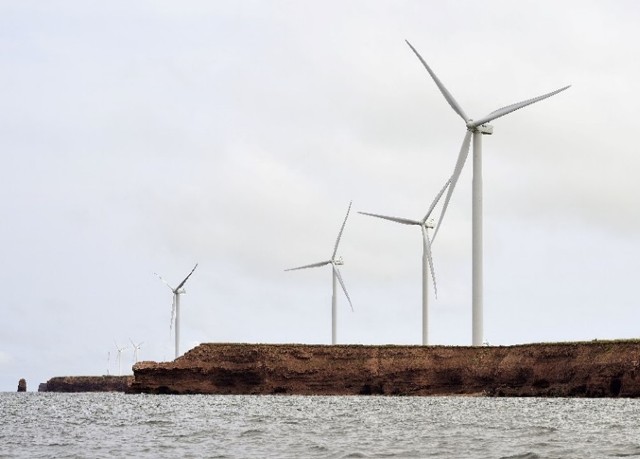

May 15, 2019

Wind generation is a continually expanding source of electrical energy
generation in Canada, reaching 13,000 MW of installed capacity (2018) which
represents approximately 9%
[1]
of
the total installed capacity from all sources. As more electrical energy is generated
by wind, it brings with it challenges to maintaining grid stability. Grid and
system operators in many parts of the world are yet to explore and exploit wind
generation’s full capabilities. This can be attributed to several reasons. Wind
generation is a relatively new technology, having been mainstream for roughly
40 years now as opposed to nearly a century of operation for coal and hydro. Wind
has historically represented a small section of the overall generation mix and
was therefore only required to provide as much power as the wind would allow. Wind
generation was not expected (or required, in most cases) to provide any
additional services besides simply generating power. Despite this having
changed in recent years
[2]
,
performance data on wind turbines’ abilities is often lacking or not public. NRCan’s
PERD project is intended to provide empirical evidence for the ancillary
services that wind turbines and storage batteries are capable of providing in
addition to simply generating power. Examples of ancillary services include
voltage support, power-frequency support, low-voltage ride through, primary
frequency response and operating reserves among others. A total of four
scenarios are developed in consultation with system operators and research
partners. Two scenarios involve only wind generators, one involves only a
battery storage system and one involves both. This work focuses primarily on a
wind turbine’s ability to provide the service of secondary frequency regulation
(aka AGC, Automatic Generation Control).
[1]
Source: Statcan - Installed
plants, annual generating capacity by type of electricity generation (2017): https://www150.statcan.gc.ca/t1/tbl1/en/tv.action?pid=2510002201
[2]
As an example, see
Section 5.6 in the Danish regulator’s requirements for wind generators - Energinet,
"Technical regulation 3.2. 5 for wind power plants with a power output
greater than 11 kW”, 2017